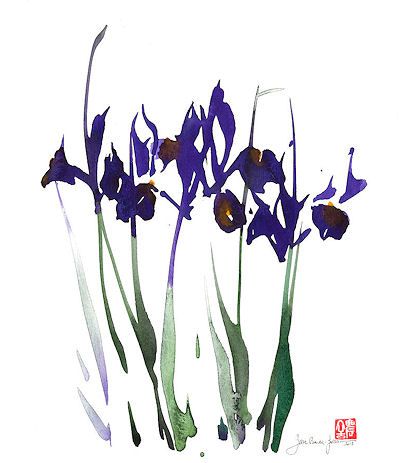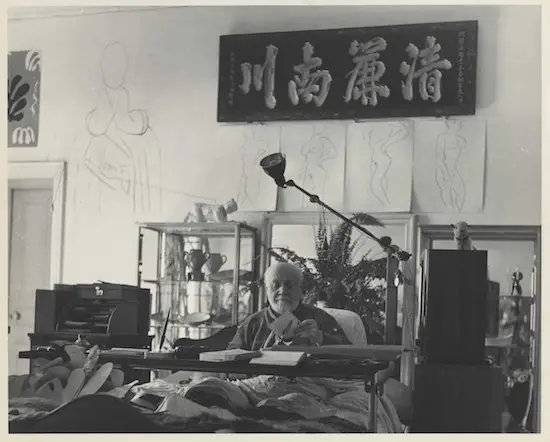Chinese calligraphy is one of the many art forms that crosses borders and cultures. Picasso once said, “Had I been born in China, I would have been a calligrapher, not a painter.” He was likely also alluding to the importance of Chinese calligraphy within Chinese culture.
Matisse also used Chinese calligraphy as inspiration.
“One of [the] most fascinating connections made in this exhibit comes from a 19th-century wood panel on which four Chinese calligraphy characters are made with quick, lyrical gestures. A 1951 photograph by Philippe Halsman shows Matisse making cut-outs in bed. Above him hangs this calligraphy panel, and below each character hangs one of Matisse’s gestural nude drawings, much like those in his “Acrobat” series.”
A “China through the Looking Glass” show at the Metropolitan Museum of Art 2 years ago put Asian influences on display. Calligraphy engravings (a permanent display) were shown next to Coco Chanel and Christian Dior dresses made in the 1950s, with white fabrics were covered in black Chinese calligraphic designs.
Modern day examples include Marc Bauer-Maison, who has exhibited work at the Louvre, creates work incorporating Japanese/Chinese calligraphy influences. The artist’s minimalism focuses on landscapes and florals. Chinese calligraphy remains a lasting influence to this day.

